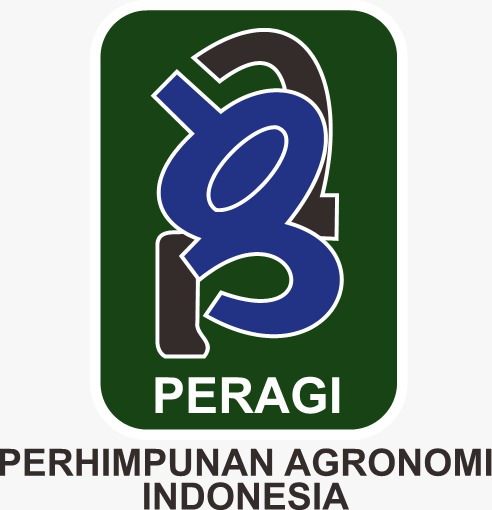Effect of NBPT-DCD (Urease and Nitrification Inhibitor) on Nitrogen Loss, N Uptake and Oil Palm Yields (Elaeis guineensis Jacq.) in Typic Dystrudepts Soil
Abstract
Incorporating N-(n-butyl) thiophosphoric triamide (NBPT) as a urease inhibitor and Dicyandiamide (DCD) as a nitrification inhibitor can enhance the efficiency of nitrogen (N) fertilization. The main aim of the study was to evaluate the impact of urease and nitrification inhibitors (NBPT and DCD) on N loss in urea fertilizer, N absorption, and oil palm (Elaeis guineensis Jacq.) yield. Researchers conducted the field trial using a single-factor, completely randomized design (CRD) with three replications. The experimental treatments included nitrogen (N) fertilization with 5 different levels. The levels were: 100% urea (2.75 kg/plant/year: 1.50 kg/plant in rotation 1 and 1.25 kg/plant in rotation 2) (N0), 80% urea + NBPT-DCD (2.20 kg/plant/year: 1.20 kg/plant in rotation 1 and 1.0 kg/plant in rotation 2) (N1), 60% urea + NBPT-DCD (1.65 kg/plant/year: 0.90 kg/plant in rotation 1 and 0.75 kg/plant in rotation 2) (N2), Urea dosage of 80% (2.20 kg/year: 1.20 kg/plant in rotation 1 and 1.00 kg/plant in rotation 2) (N3), and Urea dosage of 60% (1.65 kg/plant/year: 0.90 kg/plant in rotation 1 and 0.75 kg/plant in rotation 2) (N4). The findings revealed that the application of Urea in combination with NBPT-DCD (inhibitors of urease and nitrification) led to a reduction in N loss by 30.33-37.48% and an increase in N absorption compared to Urea without NBPT-DCD. Oil palm trees grew on Typic Dystrudept soil. The plants received 2.20 kg of urea treatment per plant. The researchers combined Urea with NBPT-DCD. These trees had better outcomes than others. They had less N volatilization and better N absorption. They also had higher fresh fruit bunch productivity. The others received N fertilization but not NBPT-DCD.Downloads
References
Abdulrachman, S. dan Pahim. 2000. Optimalisasi penggunaan pupuk N pada padi sawah. Simposium Teknologi Tepatguna Menunjang Gemapalagung. Jakarta
Balai Besar Litbang Sumberdaya Lahan Pertanian (BBSDLP). 2014. Laporan TeknisSumberdaya Lahan Pertanian Indonesia: Luas, Penyebaran, dan Potensi Ketersediaan.Badan Penelitian dan Pengembangan Pertanian
Bastos, L. M., Ferguson, R. 2015. Urease inhibitors effect on ammonia volatilization and corn grain yield. University of Nebraska-Lincoln.
Busyra, BS dan Firdaus, 2010. Rekomendasi Pemupukan Tanaman Padi Dan Palawija Pada Lahan Kering Di Provinsi Jambi, BPTP Jambi, Jambi
Corley RHV, Tinker PB. 2003. The Palm Oil Fourth Edition. Oxford (GB): Blackwell Science Ltd.
Darmosaroko, W., Sutarta, E.S. & Winarna (2003) Lahan dan Pemupukan Kelapa Sawit. 1st edition. Medan, Indonesia, Pusat Penelitian Kelapa Sawit.
fertilizer of urea-zeolite-humic acid. Journal of Zeolit Indonesia., 8:89–96.
Hakim, M. 2007. Kelapa Sawit Teknis Agronomis dan Manajemennya (Tinjauan Teoritis dan Praktis): Buku Pegangan Agronomis dan Pengusaha Kelapa Sawit. Lembaga Pupuk Indonesia. Jakarta.
Hardjowigeno, S. 2003. Ilmu Tanah. Akademika Pressindo. Jakarta.
Hidayati, J., Sukardi, Suryani, A., Fauzi, A.M. & Sugiharto. 2015. Optimization of palm oil plantation revitalization in North Sumatera Indonesia. International Journal on Advanced Science Engineering Information Technology. [Online] 5 (6), 460±468. Available from: doi:10.18517/ijaseit.5.6.601.
Jannah. N., A. Fatah, dan Marhannudin. 2012. Pengaruh macam dan dosis pupuk NPK majemuk terhadap pertumbuhan bibit kelapa sawit (Elaeis guineensis Jacq). Media Sains 4 (1): 48-54. Fakultas Pertanian Universitas Samarinda.
Kiswanto, J.H. Purwanta, dan B. Wijayanto. 2008. Teknologi Budidaya Kelapa Sawit. Balai Besar Pengkajian Teknologi Pertanian. Bogor.
Leiwakabessy, F. M. 1988. Kesuburan Tanah. Departemen Tanah, Fakultas Pertanian, IPB. Bogor.
Nainggolan, G.D., Suwardi., Darmawan. 2009. Pattern of nitrogen release from slow release
Nurjaya. 2009. Kelapa sawit di main nursery melalui analisis daun menggunakan metode DRIS. Prosiding Balai Penelitian Tanah, Bogor.
Pahan, I. 2010. Panduan Lengkap Kelapa Sawit. Penebar Swadaya: Jakarta.
Palm Oil Agribusiness Strategic Policy Institute (PASPI). 2016. Mitos Vs Fakta Industri Minyak Sawit Indonesia dalam Isu Sosial, Ekonomi dan Lingkungan Global Edisi Kedua. Bogor.
Riyadi, A.S, Putra, E.T. S, Hanudin E., 2020. The influence of urease and nitrification inhibitor on loss of N and oil palm harvest in peat, Jur. Agricultural Science, Vol. 5 No. 2
Roberts, T., Norman, R., Slaton, N., Espinoza, L. 2016. Nitrogen fertilizer additives. Online:http://www.uaex.edu. Diakses pada tanggal 20 Februari 2022.
Sanchez, P. A. 1979. Properties and Management of Soil in Tropics. Jhon Wiley and Sons. New York.
Soh, A.C., Mayes, S. & Roberts, J. 2017. The Plant and Crop.In: Soh, A.C., Mayes, S. & Roberts, J. (eds.) Oil palm breeding genetics and genomics. New York, CRC Press Taylor & Francis Group
Copyright (c) 2024 Khairuddin Khairuddin, Wawan Wawan, Besri Nasrul, Feri Seftiadi, Haryanto Haryanto, Achmad Fathoni, M. Nizam Tambusai

This work is licensed under a Creative Commons Attribution 4.0 International License.
Authors who publish with Jurnal Agronomi Tanaman Tropika (JUATIKA) agree to the following terms:
Authors retain copyright and grant the Jurnal Agronomi Tanaman Tropika (JUATIKA) right of first publication with the work simultaneously licensed under a Creative Commons Attribution License (CC BY 4.0) that allows others to share (copy and redistribute the material in any medium or format) and adapt (remix, transform, and build upon the material for any purpose, even commercially) with an acknowledgment of the work's authorship and initial publication in Jurnal Agronomi Tanaman Tropika (JUATIKA).
Authors are able to enter into separate, additional contractual arrangements for the non-exclusive distribution of the journal's published version of the work (e.g., post it to an institutional repository or publish it in a book), with an acknowledgment of its initial publication in Jurnal Agronomi Tanaman Tropika (JUATIKA). Authors are permitted and encouraged to post their work online (e.g., in institutional repositories or on their website) prior to and during the submission process, as it can lead to productive exchanges, as well as earlier and greater citation of published work.







 More Information
More Information



